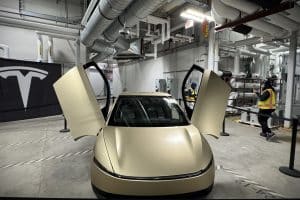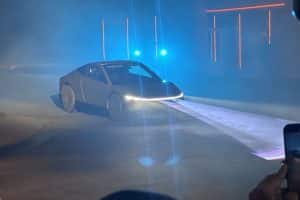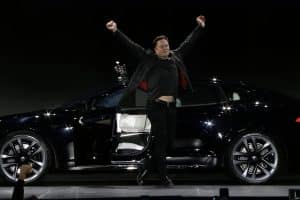- 🚗 Tesla’s Cybercab will exclusively use inductive charging, foregoing the traditional NACS port.
- 🤖 The Cybercab is designed for autonomous operation, aligning with Tesla’s Robotaxi vision.
- 🚀 High production volume is planned to easily integrate Cybercabs into operator fleets.
- 🧼 The Cybercab features an innovative robot cleaning system for efficient vehicle maintenance.
- 💰 The vehicle is expected to be priced under $30,000 and available to consumers.
In the ever-evolving landscape of transportation technology, Tesla continues to lead the way with groundbreaking innovations. The introduction of the Cybercab epitomizes Tesla’s forward-thinking approach, combining cutting-edge inductive charging technology, autonomous operation capabilities, and affordability. This blog post delves into the impressive features of the Tesla Cybercab and explores its potential impact on the transportation industry.
A Leap Forward with Inductive Charging
Tesla’s decision to employ inductive charging in the Cybercab is a game-changer. By eschewing the traditional North American Charging Standard (NACS) port, Tesla not only simplifies the charging process but also addresses various logistical challenges associated with plug-in electric vehicles.
How Inductive Charging Works
Inductive charging, also known as wireless charging, utilizes electromagnetic fields to transfer energy between two objects. In the case of the Cybercab, a charging pad on the ground transfers electricity to a receiving coil in the vehicle, eliminating the need for manual plug-in connections.
Advantages of Inductive Charging
- Convenience: Drivers can simply park the vehicle over the charging pad.
- Maintenance: Reduced wear and tear on charging ports and cables.
- Safety: Minimizes risks associated with exposed connectors and cables.
Embracing Autonomy with the Cybercab
The Cybercab is designed with full autonomy in mind, underscoring Tesla’s commitment to its Robotaxi vision. This development has several implications for both consumers and the broader transportation industry.
Autonomy Features
- Advanced Sensor Suite: Equipped with an array of sensors for seamless navigation and obstacle detection.
- Machine Learning: Utilizes Tesla’s proprietary AI to continually improve driving algorithms.
- Fleet Management: Easily integrates into large fleets for efficient operation and management.
High Production Volume: Meeting Demand
To facilitate widespread adoption, Tesla plans for high production volumes of the Cybercab, making it readily available for fleet operators and consumers alike. This strategy is vital for achieving economies of scale and reducing costs.
Benefits of High Production Volume
- Cost Reduction: Drives down the price per unit, making it more affordable for consumers.
- Availability: Ensures sufficient supply to meet the demands of operators looking to scale their fleets.
- Market Penetration: Enhances Tesla’s ability to capture a significant share of the autonomous vehicle market.
Innovation in Maintenance: Robot Cleaning System
Maintaining a fleet of autonomous vehicles poses unique challenges, and the Cybercab offers a novel solution with its built-in robot cleaning system. This feature ensures that the interiors of the vehicles remain immaculate with minimal human intervention.
Key Elements of the Cleaning System
- Automated Interior Cleaning: Robots clean not only debris but also polish screens and surfaces.
- Efficiency: Reduces downtime associated with manual cleaning.
- Sanitation: Ensures a hygienic environment for passengers, an essential factor in shared transportation models.
Affordability Meets Innovation
At an anticipated price point of under $30,000, the Cybercab makes advanced transportation technology accessible to a broader audience. This pricing strategy aligns with Tesla’s mission to accelerate the world’s transition to sustainable energy.
Impact of Affordable Autonomous Vehicles
- Democratization: Opens up advanced personal and shared transportation options to more consumers.
- Competition: Challenges other manufacturers to offer competitive pricing on similar technologies.
- Urban Mobility: Supports the shift toward smart urban mobility solutions and decreases reliance on fossil fuels.
Conclusion
The Tesla Cybercab represents a significant milestone in the journey toward autonomous, sustainable transportation. With its innovative features, from inductive charging to autonomous operation and a robot cleaning system, it addresses a myriad of challenges associated with modern transportation. As production ramps up and the vehicle enters the market, Tesla is poised to redefine how we view personal and shared travel, making it more efficient, affordable, and environmentally friendly.





